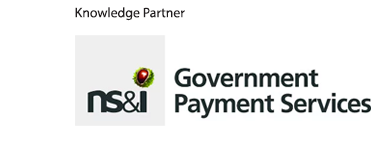AI Lessons: What the Public Sector Can Learn From the Private Sector

The public sector has a unique set of needs compared to the private sector. The primary difference is the public sector exists to provide security and services to the population, while private organizations primarily exist to maximize shareholder value. This key difference creates a varied set of motivations, behaviors and cultural nuances.
Despite these differences, artificial intelligence (AI) providers looking to better serve public sector organizations can apply key lessons from the private sector. Before exploring those lessons, let’s do a short AI primer.
What is AI?
AI is a broad field, with subfields like machine learning, deep learning, computer vision, natural language processing, forecasting and optimization. The term “artificial intelligence” was first coined in 1956 and can be defined as “the science of training systems to emulate specific human tasks through learning and automation.” To understand AI, one must understand adjacent fields – including data management and the nuances of an algorithm life cycle.

There are three specific phases of an AI project’s life cycle:
- Data. Ensure that your data is an accurate representation of the population that you service. The work during this phase will include ensuring data quality, removing data bias, dealing with PII (personally identifiable information), visualizing the data and understanding any limitations. You must first consider that AI is often more “data hungry” than other traditional forms of analytics.
- Discovery. Have a broad array of analytical and statistical capabilities for your project. No single technology will resolve a business problem. Employing a platform approach with multiple analytical tools is key. It’s in this phase of the life cycle where learning and automation takes place, providing improved optimization, anomaly detection, computer vision or the like.
- Deployment. It’s often overlooked, but is the most important part of any AI project. Deployment is when a predictive model, trained and built using artificial intelligence, is subjected to new data. Monitor model performance, track and minimize model decay, and retrain models as needed to ensure consistent, quality predictions.
With this primer in hand, let’s look at the top AI lessons the public sector can learn from the private sector.
Have a consistent data management strategy
Government agencies have a common goal: Improve security and services for their constituents at the lowest possible cost. Analytics insight using data helps accomplish this goal and public sector organizations usually have lots of data. This data comes from various sources and is usually housed in multiple sources and structures. This exacerbates the challenge of building sustained services that the public can trust.
To address this challenge, governments can learn from the private sector’s chief data officer (CDO) and establish recommendations and best practices for data management. By following these recommendations, local governments can begin to “clean” their data with consistent structure. Next steps include managing data privacy and PII while reducing stale data. This approach will continue to pay dividends by improving cooperation between public sector organizations.
Implement technology standards
Most AI projects in the private sector are incubated in business units (BUs) rather than company headquarters. BU leaders need to provide excellent and efficient service to their customers, while meeting revenue and profitability targets. They see AI as a path to achieve these goals. However, this can also lead to a complex and unsustainable technology architecture that is unique to each BU and impossible to maintain and grow.
In the private sector, the CIO’s office guides the BUs through myriad technology choices, applying previous lessons and reducing deployment risks. This is a great lesson for the public sector: Establish internal centers of excellence within agencies that make informed decisions on AI infrastructure. Top considerations include incorporating open source technologies with existing infrastructure. As a result, the “black box” nature of AI is reduced while building a flexible and scalable architecture.
Consider technical skills and leadership
Most AI projects require alternate approaches, different thinking and breaking the norm. Combine this with the hype and fear of AI and you have a project with a high risk of failure. To manage this, private organizations have invested in technical skills as well as strong, pragmatic leadership.
The public sector can learn from this. The right leader charts a path that requires solving smaller, focused problems. This allows the organization to identify skill gaps and limitations of the technology. As the team builds skills, communication and understanding of AI capabilities, AI-based approaches can scale to solve larger and broader problems.
With thousands of machine learning deployments in both the public and private sector, SAS understands the challenges and capabilities of AI. The SAS® Platform helps organizations of all sizes and needs begin their AI journey through data, analytics, deployment and the life cycle of projects. To learn what our customers accomplish with AI, visit sas.com/customers and select “Artificial Intelligence.” To get immediate access to the SAS Platform, head over to sas.com/trials for feature-rich access to all our AI and analytics tools.
Click here to learn how Lockheed Martin reduced aircraft downtime with AI.
















